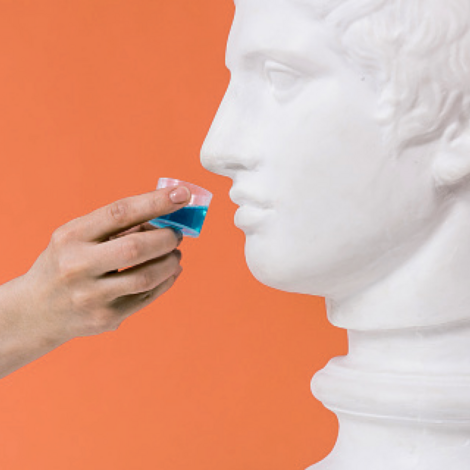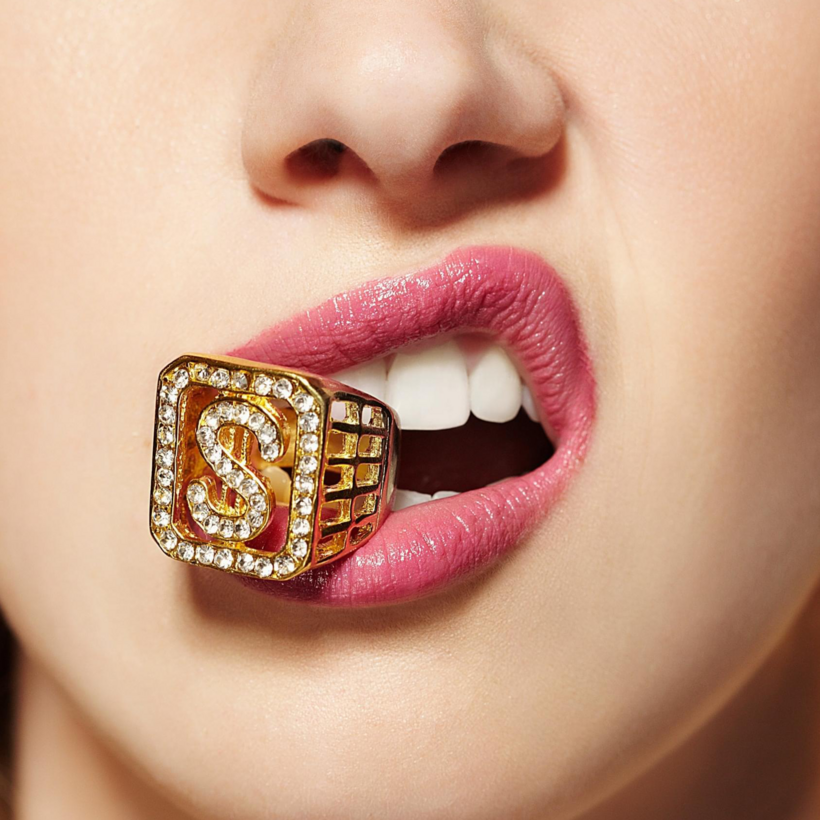What’s sleek, black, costs three figures and is the most lusted-after item in my bathroom? It’s not a Byredo candle or a bottle of Aesop shower gel. I am talking about the latest bit of wellness tech: my electric toothbrush.
I never thought I’d see the day when a toothbrush would become the thing guests asked most about after using my loo, but it seems that we’re all now obsessed with oral hygiene. The latest tech is the talk of my WhatsApp groups, while the U.K. oral care market was valued at $2.28 billion in 2023 and is only growing.
A new wave of high-tech toothbrushes is emerging, such as the $470 Philips Sonicare DiamondClean 9000, which comes with four vibration modes and an app that tracks how well you’re cleaning your teeth. Bon Charge, an expensive wellness tech brand beloved by the Kardashians, released a $200 Red Light Sonic Toothbrush that combines sonic vibration with near-infrared and red light. The red light, according to the Bon Charge co-founder Katie Mant, helps reduce inflammation of the gums while you’re brushing. “People are willing to invest in tools that do more than simply clean teeth,” she says.
After gut health and brain health, oral health has been dubbed the next frontier of wellness, bolstered by a breed of glamorous dentists with huge social media followers, including the London-based pair Dr. Rhona Eskander (134,000 followers) and Dr. Manrina Rhode (45,000 followers).
Thought you could make do with that $3 toothpaste? Let me introduce you to Pärla, an $15 tube of “dentist-approved”, vitamin B12-enriched paste sold in Waitrose that looks more like an expensive hand cream than something you might brush your teeth with. On TikTok and Instagram water flossers (gadgets that use high-pressure spurts of water to floss between teeth) are flogged by oral health influencers (yes, they exist), while at the Health Society in west London, a clinic dedicated to mouth health, you can pay $470 to get your breath and microbiome tested and analyzed to check what bacteria are in your mouth and assess your risk of gum disease.
For a long time my own toothbrush was a Colgate plastic number that cost me less than a fiver. But then I got a $140 Suri brush, arguably Britain’s first viral toothbrush, which launched in 2022, is sold in five colors and comes with a dinky travel case with an inbuilt battery-powered UV light that promises to kill 99.9 per cent of bacteria lingering on the recyclable, plant-based head. More than one million people have bought a Suri and last year the company reported revenue of $32 million. But was my investment worth it?
I’ll admit it: when I first made the upgrade to electric, I could feel the difference. My teeth felt silky and smooth. My smile looked brighter, I thought, and still does. Broadly speaking, electric toothbrushes are much better at removing more plaque than manual ones, which leads to healthier gums and reduces the risk of oral diseases, according to Dr. Martin Wanendeya, the co-founder of the south London clinic Ten Dental. Too much plaque and bacteria can also disrupt the balance of our oral microbiome, which is intricately linked to the microbiome of our gut. But we’ve also known that for some time. Do we really need all these bells and whistles, or to spend three figures, to look after our mouths?
Not necessarily, Wanendeya says. “When choosing a brush, the most important factor is that it allows you to clean effectively and comfortably. A small head with medium bristles is key, whether it’s a manual or an electric brush.”
Wanendeya has seen an increase in his patients buying premium toothbrushes, but no viral toothbrush in a pretty color or connected to an impressive app can compensate for bad habits. “Daily brushing, interdental cleaning and regular check-ups remain the foundation of good oral health,” he says.
What does proper brushing look like? First of all, you need to apply the correct pressure. “Let the brush do the work. Pressing too hard actually reduces the effectiveness and can damage your gums,” Wanendeya says. Time is critical too. “Brush for the full two minutes, twice a day. Even with an electric toothbrush, people often fall short.” And consistency counts. “Replace the brush head every three months.”
It doesn’t matter how high tech and expensive your brush is, if you can’t follow those rules you might have wasted your money.
Hannah Evans is a writer based in London




